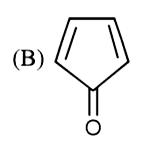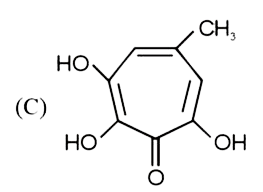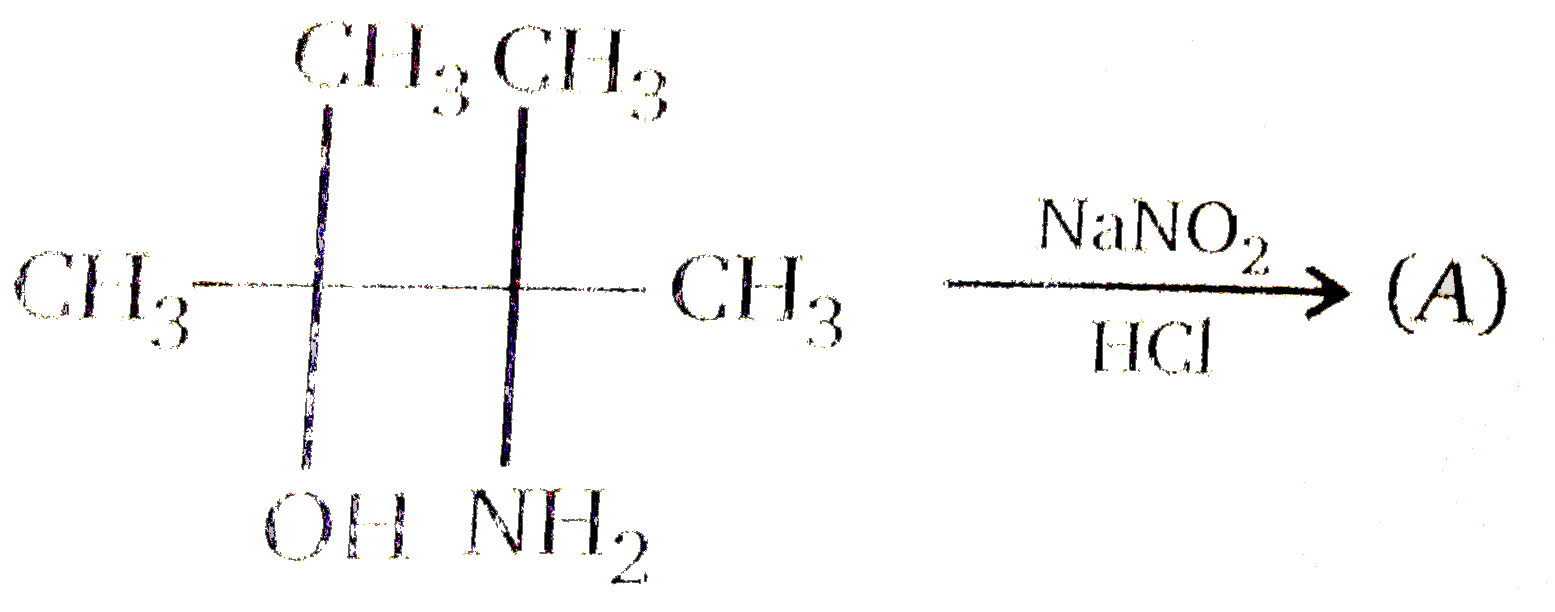when 3-methylbutan-2-ol is treated with HBr, the following reaction takes place:

Give the mechanism of this reaction.
Hint : The secondary carbocation formed in step II rearranges to a more stable tetriary carbocation by a hydride ion shift form the third carbon atom.
The protonation of given alcohol followed by loss of water gives a 2∘ carbocation (I), which being unstable rearranges by 1,2-hydride shift to form a more stable 3∘ carbocation (II). Nuclueophilic attack by Br− ion on this carbocation (II) gives the final product.

Topper's Solved these Questions
- ALCOHOL,PHENOL AND ETHERSBOOK - CENGAGE CHEMISTRYCHAPTER - ALCOHOL,PHENOL AND ETHERSEXERCISE - Exercises Linked Comprehension
60 Videos
- ALCOHOL,PHENOL AND ETHERSBOOK - CENGAGE CHEMISTRYCHAPTER - ALCOHOL,PHENOL AND ETHERSEXERCISE - Exercises Multiple Correct
35 Videos
- ALCOHOL,PHENOL AND ETHERSBOOK - CENGAGE CHEMISTRYCHAPTER - ALCOHOL,PHENOL AND ETHERSEXERCISE - Exercises Subjective
25 Videos
- ALIPHATIC AND AROMATIC ALDEHYDES AND KETONESBOOK - CENGAGE CHEMISTRYCHAPTER - ALIPHATIC AND AROMATIC ALDEHYDES AND KETONESEXERCISE - Archives Subjective
29 Videos
Similar Questions
When 3-methylbutan-2-ol is treated with HBr, the following reaction takes place:
CH3−C | CH3H−C| OHH−CH3HBr−−→CH3−Br| C | CH3−CH2−CH3
Give a mechanism for this reaction.
(Hint : The secondary carbocation formed in step II rearranges to a more stable tertiary carbocation by a hydride ion shift from 3rd carbon atom.
View SolutionWhen 3, 3-dimethylbutan-2-ol is treated with concentrated HI, a rearrangement occurs. Name the alkyl iodide formed showing the steps of the reaction.
View Solution
Knowledge Check
Which one of the following carbonyl compound when treated with dilute acid forms the more stable carbocation ?
ACH3−O∣∣C−CH3B C
C DC6H5−O∣∣C−C6H5
DC6H5−O∣∣C−C6H5Di-tert-glycols rearrange in the presence of acid to give α-trtiary ketones. The trivial name of the simplest glycol of this type is pinacol, and this type of reaction therefore is named pinacol rearrangement (in this specific case, the reaction is called a pinacol-pinacolone rearrangement). The rearrangement involves 4 steps. one of the hydroxyl group is protonated in the first step. A molecule of water is eliminated in the second step and a tertiary carbocation is formed. the carbocation rearranges in the third step into a more stable carboxonium ion via a [1, 2] rearrangement. In the last step, the carboxonium ion is deprotonated and the product ketone is obtained.


How many products obtained in above reaction ?A1B2C3D4Di-tert-glycols rearrange in the presence of acid to give α-trtiary ketones. The trivial name of the simplest glycol of this type is pinacol, and this type of reaction therefore is named pinacol rearrangement (in this specific case, the reaction is called a pinacol-pinacolone rearrangement). The rearrangement involves 4 steps. one of the hydroxyl group is protonated in the first step. A molecule of water is eliminated in the second step and a tertiary carbocation is formed. the carbocation rearranges in the third step into a more stable carboxonium ion via a [1, 2] rearrangement. In the last step, the carboxonium ion is deprotonated and the product ketone is obtained.

What is R.D.S. of pinacol-pinacolone rearrangement ?AI stepBII stepCIII stepDIV step
If 3-chloromethylhexane is treated with C2H5Ona/C2H5OH,E2 elimination reaction takes place predominantly. How many different alkenes would be formed ?
View SolutionDi-tert-glycols rearrange in the presence of acid to give α-trtiary ketones. The trivial name of the simplest glycol of this type is pinacol, and this type of reaction therefore is named pinacol rearrangement (in this specific case, the reaction is called a pinacol-pinacolone rearrangement). The rearrangement involves 4 steps. one of the hydroxyl group is protonated in the first step. A molecule of water is eliminated in the second step and a tertiary carbocation is formed. the carbocation rearranges in the third step into a more stable carboxonium ion via a [1, 2] rearrangement. In the last step, the carboxonium ion is deprotonated and the product ketone is obtained.


Product 'P' is :
View SolutionDi-tert-glycols rearrange in the presence of acid to give α-trtiary ketones. The trivial name of the simplest glycol of this type is pinacol, and this type of reaction therefore is named pinacol rearrangement (in this specific case, the reaction is called a pinacol-pinacolone rearrangement). The rearrangement involves 4 steps. one of the hydroxyl group is protonated in the first step. A molecule of water is eliminated in the second step and a tertiary carbocation is formed. the carbocation rearranges in the third step into a more stable carboxonium ion via a [1, 2] rearrangement. In the last step, the carboxonium ion is deprotonated and the product ketone is obtained.


Product (A) is :
View SolutionA : When 3,3-dimethyl butan - 2 - ol is heated in presence of concentrated H2SO4 then 2, 3-dimethyl but -2-ene is formed as major product .
R : In this reaction , carbocation is formed as an intermediate
View SolutionIn which of the following cations rearrangement takes place?
View Solution
